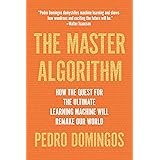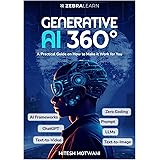Generative AI Tools
In a world where technology relentlessly expands the boundaries of what is possible, generative AI tools are shining examples of creativity. With technological advancements and enormous databases, generative AI tools have transformed industries, from art and design to music and literature. What we are discussing in this blog post is the potential, applications, and implications of generative AI tools
Unleashing Creativity with Generative AI
Generative AI, a branch of artificial intelligence, is concerned with generating new content, usually emulating human creativity. In contrast to conventional AI, which acts within established rules, generative AI systems learn from large pools of data to generate original content independently.

Art and Design
Generative AI tools have revolutionized the art and design industry, providing artists with new means of expression and experimentation. From making digital paintings to creating distinctive patterns and textures, the tools open up unlimited possibilities. Artists can partner with algorithms, combining human imagination with machine power to create interesting pieces of art.
Music Composition
In music, generative AI applications have become essential partners for musicians and composers. Through the study of existing musical styles and compositions, these applications can create melodies, harmonies, and even complete musical compositions. From creating background scores for movies to helping musicians write songs, generative AI is revolutionizing the composition and consumption of music.
Literature and Writing
Generative AI has also left its impression in literature and writing. Writers can utilize these tools to get past writer’s block, create story ideas, or even co-write books. Chatbots based on generative AI can also have meaningful conversations, making it difficult to distinguish between human and machine-generated content.
You can also read an article on Revolutionizing Marketing: Harnessing AI Tools for Success
Applications Across Industries
Outside the domains of art and creativity, generative AI technologies have applications in different industries:
Product Design: Businesses use generative AI to search through design alternatives and maximize product performance.
Content Generation: Advertising agencies utilize generative AI to produce customized content for specific audiences.
Healthcare: Generative AI assists in medical image analysis, drug discovery, and personalized treatment suggestions.
Gaming: Game developers use generative AI to create realistic environments, characters, and interactive stories.
Ethical Implications and Challenges
Although generative AI tools provide great promise, they also present ethical implications and challenges:
Bias and Fairness: Generative AI systems can inherit biases in the training data, resulting in unfair representations or outcomes.
Intellectual Property: Ownership of AI-generated content questions intellectual property rights and attribution.
Misuse and Manipulation: Generative AI technologies can be used to produce false news, disinformation, or deepfake videos, which can be dangerous to societal stability and trust.
Looking Ahead
As generative AI keeps advancing, the future holds even greater prospects. Researchers are working on new architectures like GANs (Generative Adversarial Networks) to push the boundaries of the capabilities of generative AI systems even further. And breakthroughs in natural language processing (NLP) are allowing more advanced dialogue and storytelling AI models.
Overall, generative AI software is more than technological wonders; they are also drivers of innovation and creativity in various fields. Through the utilization of AI power, we are capable of unlocking fresh horizons of human expression and creativity. While we do that, however, it’s paramount that we be cautious and step carefully in recognition of the ethics and problems of such breakthroughs. While we keep breaking grounds in terms of creativity, we should do it responsibly to a point where our efforts benefit the fabric of society, and not harm it.





Leave a Reply